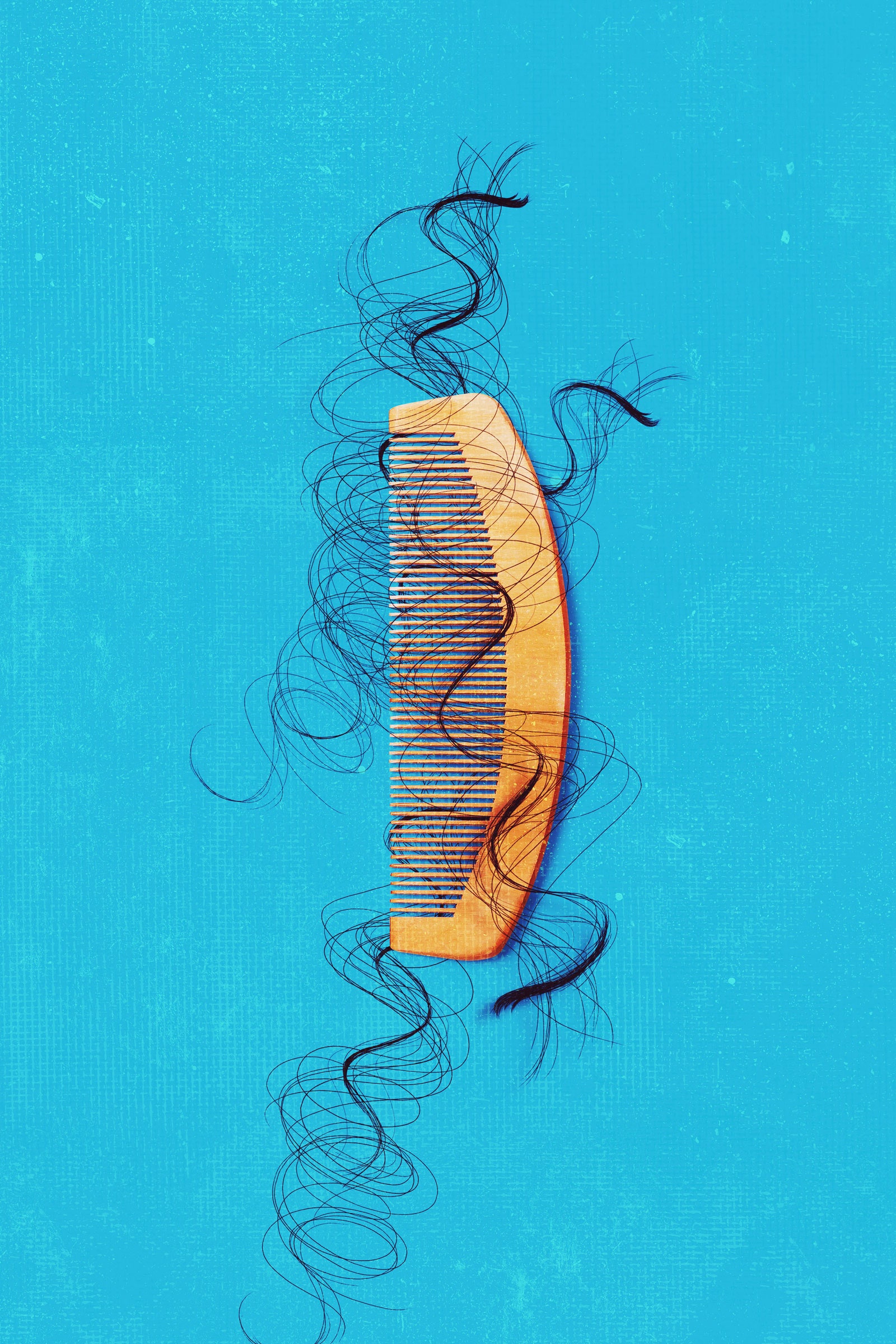
A Hair Loss Study Raises New Questions About Aging Cells
Maksim Plikus loves talking about hair. The cell biologist from the University of California, Irvine rattles off obscure facts: Sloth hair has a green tinge thanks to symbiotic algae; African crested rats evolved hollow hairs, which they slather with a pasty bark-derived toxin to defend themselves; his last name comes from a Latvian word for “bald.” Growing up in Eastern Europe (he’s neither Latvian nor bald, despite his name), Plikus aspired to do biomedical research. He joined a lab that had him dissecting rat whiskers under a microscope. It was hard, and his hands would shake. But eventually he got the hang of it. “I started to appreciate just the beauty of the follicle,” he says.
Plikus interned at a hair transplant clinic before getting a PhD in pathology and starting his own lab that targets hormone-related hair loss. In pattern baldness, or androgenetic alopecia, stem cells in the follicle go dormant, meaning that they stop producing new hairs. Thick long hairs dwindle to smaller ones that shed more often and eventually vanish. “It's actually very exquisite, this micro-organ that most people don't really think is so complex,” he says.
Hair loss is underestimated, at least in terms of scientific research. It gets pegged as a cosmetic concern, not a medical one. “One does not die from hair loss. But our hair is part of our identity,” Plikus says. Losing hair takes a huge toll on mental health. Several studies have even reported that patients consider refusing chemotherapy over it.
Today, there are few treatment options. Two drugs (finasteride and minoxidil) can slow or stop loss, but show mixed results for regrowing hair—and results vanish when treatment stops. Another option is surgically transplanting follicles from the back of a person's head to the top. But this just shuffles existing hairs around. So Plikus pursued a new idea—and accidentally found himself exploring not just the mechanics of baldness, but of aging itself.
His journey began by investigating another cosmetic quirk: hairy moles, which form on the chest, arms, or elsewhere. Also called nevi, these dark spots grow long hairs, even though the skin around them is hairless. Over the past 10 years, Plikus’ team has delved into why hair grows here, hoping to pinpoint a protein that can do the same to the scalp. Now they’ve found it, he says: a protein called osteopontin.
In a battery of experiments described in June in Nature, the team reveals that osteopontin jumpstarts hair growth in mice. And in one test, the team achieved the same with human hair that had been grafted onto mice.
That had obvious implications for hair regrowth, but it also raised some intriguing questions about aging cells. The osteopontin in moles comes from cells that appear to be senescent—not dead, but no longer dividing. Senescence is protective because it stops cell mutations from proliferating into cancer. But it comes at a cost: Aging researchers have long assumed that these cells stick around to the detriment of the younger cells around them. When they stop replicating, they may contribute to age-related diseases by secreting harmful molecules and increasing inflammation and dysfunction.

